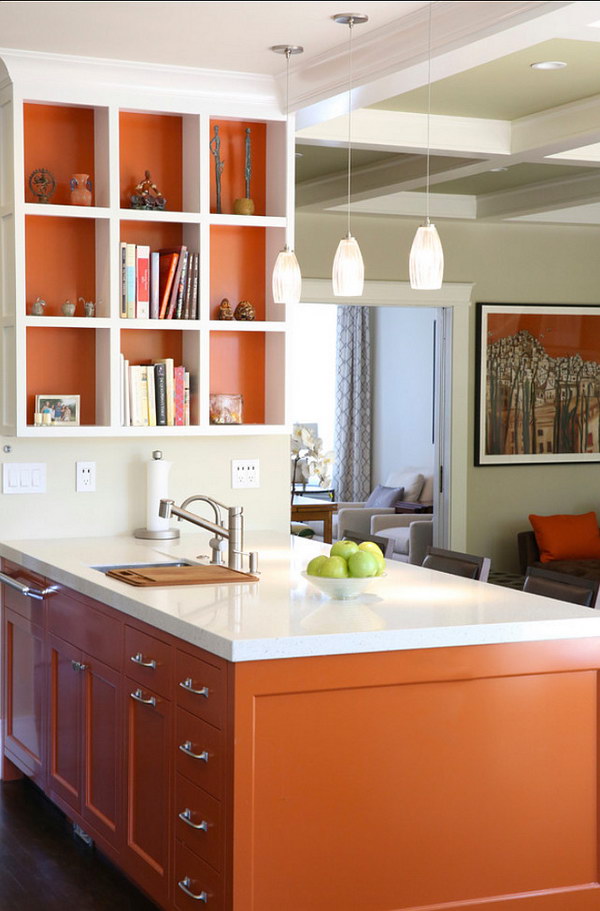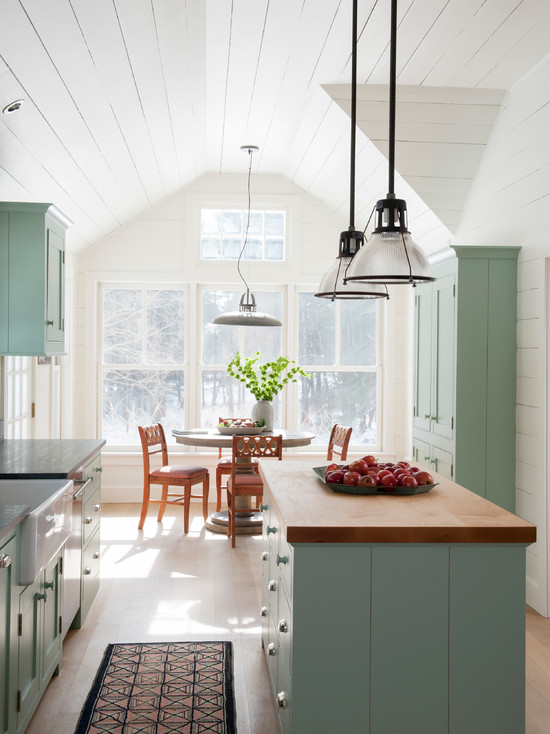A Guide to Painting Your Kitchen Cabinets White
Painting kitchen cabinets can drastically transform the look and feel of your kitchen, breathing new life into the heart of your home. Among the myriad of color choices available, white remains a timeless and popular option, lending a sense of cleanliness, brightness, and versatility to the space. However, achieving a professional-looking finish requires careful preparation, technique, and attention to detail. In this comprehensive guide, we’ll walk you through the step-by-step process of painting your kitchen cabinets white, from preparation to finishing touches.

Preparation is Key
Before diving into the painting process, thorough preparation is essential to ensure a smooth and long-lasting finish. Start by removing all items from your cabinets and clearing the workspace. Next, thoroughly clean the cabinets to remove any grease, grime, or residues using a mild detergent and water solution. Once clean, rinse the cabinets thoroughly and allow them to dry completely.
After cleaning, it’s time to sand the cabinets to create a smooth surface for the paint to adhere to. Use a fine-grit sandpaper (around 120-150 grit) to gently sand the surface, paying extra attention to any rough areas or imperfections. Be sure to sand in the direction of the wood grain to avoid creating scratches or marks. Once sanded, wipe down the cabinets with a tack cloth to remove any dust or debris.

Choose the Right Paint and Tools
Selecting the appropriate paint and tools is crucial for achieving a professional-looking finish. For painting kitchen cabinets, it’s recommended to use high-quality, durable paint specifically designed for cabinets and trim. Opt for a semi-gloss or satin finish for easy cleaning and maintenance. Additionally, consider using a primer formulated for use on wood surfaces to ensure proper adhesion and coverage.
When it comes to brushes and rollers, choose high-quality options to avoid brush marks and streaks. A combination of a high-quality synthetic brush and a foam roller is often recommended for achieving a smooth finish. Make sure to have plenty of painter’s tape on hand to protect surrounding surfaces and achieve clean lines.

Apply the Primer
Priming is an essential step in the painting process, especially when painting over dark or stained cabinets with a light color like white. Apply a thin, even coat of primer to the cabinets using a brush or roller, making sure to cover the entire surface evenly. Allow the primer to dry completely according to the manufacturer’s instructions before proceeding to the next step.
Painting the Cabinets
Once the primer is dry, it’s time to apply the paint. Stir the paint thoroughly to ensure even distribution of color and consistency. Begin by painting the inside edges and framework of the cabinets using a brush, then switch to a foam roller to paint the flat surfaces. Work in small sections, applying the paint in thin, even coats to avoid drips and streaks. Be patient and allow each coat to dry completely before applying the next.
After the first coat is dry, lightly sand the cabinets with fine-grit sandpaper to smooth out any brush marks or imperfections. Wipe away any dust with a tack cloth before applying subsequent coats of paint. Depending on the coverage and desired finish, you may need to apply two or more coats of paint, allowing each coat to dry thoroughly between applications.
Finishing Touches
Once the final coat of paint is dry, carefully remove the painter’s tape to reveal clean, crisp lines. Reattach the hardware and reinstall the cabinets, taking care to handle them gently to avoid damaging the freshly painted surfaces. Allow the paint to cure fully according to the manufacturer’s instructions before placing items back into the cabinets and resuming normal use of the kitchen.

Common Mistakes to Avoid:
Skipping Proper Preparation: Neglecting to clean and sand the cabinets thoroughly can result in poor adhesion and an uneven finish.
Using Low-Quality Paint and Tools: Investing in high-quality paint and tools is essential for achieving a professional-looking finish that will stand the test of time.
Rushing the Process: Painting cabinets is a time-consuming task that requires patience and attention to detail. Rushing through the process can result in sloppy workmanship and disappointing results.
Not Allowing Sufficient Drying Time: Failing to allow each coat of paint to dry completely before applying the next can lead to tackiness, streaks, and other imperfections.
Ignoring Proper Ventilation: Adequate ventilation is essential when painting indoors to ensure proper drying and to minimize exposure to fumes and odors. Open windows and use fans to help circulate air during the painting process.

How long does it take to paint kitchen cabinets white?
The time it takes to paint kitchen cabinets white can vary depending on factors such as the size of the kitchen, the condition of the cabinets, and the number of coats required. Generally, you can expect the process to take several days to a week from start to finish, including preparation, priming, painting, and drying time.
Do I need to sand my cabinets before painting them white?
Yes, sanding is an important step in preparing cabinets for painting, especially when transitioning from a dark or stained finish to white. Sanding helps create a smooth surface for the paint to adhere to and ensures a professional-looking finish.
Can I paint over laminate cabinets with white paint?
Yes, you can paint over laminate cabinets with white paint, but proper preparation is key. Be sure to thoroughly clean the cabinets and use a high-quality primer formulated for use on laminate surfaces to ensure proper adhesion and coverage.
How do I prevent brush marks when painting cabinets white?
To minimize brush marks and achieve a smooth finish when painting cabinets white, use high-quality brushes and rollers, apply the paint in thin, even coats, and sand between coats to smooth out any imperfections.
How do I care for white painted kitchen cabinets?
To keep white painted kitchen cabinets looking their best, regularly wipe them down with a mild detergent and water solution to remove any dirt or grease. Avoid using abrasive cleaners or scrubbing pads, as these can damage the paint finish.

Professional Help?
While painting your kitchen cabinets white can be a rewarding DIY project, some homeowners may prefer to enlist the help of professional painters, especially if they lack the time, skills, or confidence to tackle the job themselves. Hiring a professional can ensure a high-quality finish and save you time and hassle in the long run.
Here are a few reasons why you might consider hiring professional help to paint your kitchen cabinets white:
- Expertise and Experience: Professional painters have the knowledge, skills, and experience to achieve a flawless finish. They understand the nuances of cabinet painting, including proper preparation, technique, and product selection, ensuring superior results.
- Time Savings: Painting kitchen cabinets is a time-consuming task that requires meticulous preparation and attention to detail. By hiring professionals, you can save valuable time and focus on other priorities while they handle the painting process from start to finish.
- Quality Assurance: Professional painters use high-quality materials and tools to ensure a durable and long-lasting finish. They also have access to professional-grade paints and primers that may not be readily available to homeowners, resulting in a superior outcome.
- Efficiency: Professional painters work efficiently and systematically to complete the job promptly, minimizing disruptions to your daily routine. They have the manpower and resources to tackle large projects quickly and efficiently.
- Guaranteed Results: Many professional painting companies offer warranties or guarantees on their workmanship, providing you with peace of mind knowing that if any issues arise, they will be promptly addressed at no additional cost.
If you decide to hire professional painters for your cabinet painting project, be sure to do your research and choose a reputable and experienced company. Ask for recommendations from friends or family, read online reviews, and request quotes from multiple painters to ensure you find the best fit for your needs and budget.
While hiring professionals may involve an upfront investment, the peace of mind and quality results they provide can be well worth it in the long run, ensuring your newly painted white kitchen cabinets look beautiful and pristine for years to come.

Countertops With White Cabinet

Painting Kitchen Cabinets: Refresh Your Outdated Kitchen

How to Paint Kitchen Cabinets White

The Best Way to Paint Kitchen Cabinets

Stunning Creek Stone Brushed Brown Glaze Cabinets

Kitchen Wall Color Ideas that Make Your Kitchen More Fancy

I think I want white kitchen cabinets!

Related Posts:
- 30 Inch Wide Kitchen Pantry Cabinet
- White Kitchen Cabinets With Dark Backsplash
- Wreaths On Kitchen Cabinets
- Automatic Kitchen Cabinets
- Wood Trim For Kitchen Cabinets
- Cleaning Gloss Kitchen Cabinets
- Kerala Model Kitchen Cabinets Design
- Unfinished Raised Panel Kitchen Cabinets
- Kitchen Cabinet Upgrade Cost
- Seinfeld Kitchen Cabinets